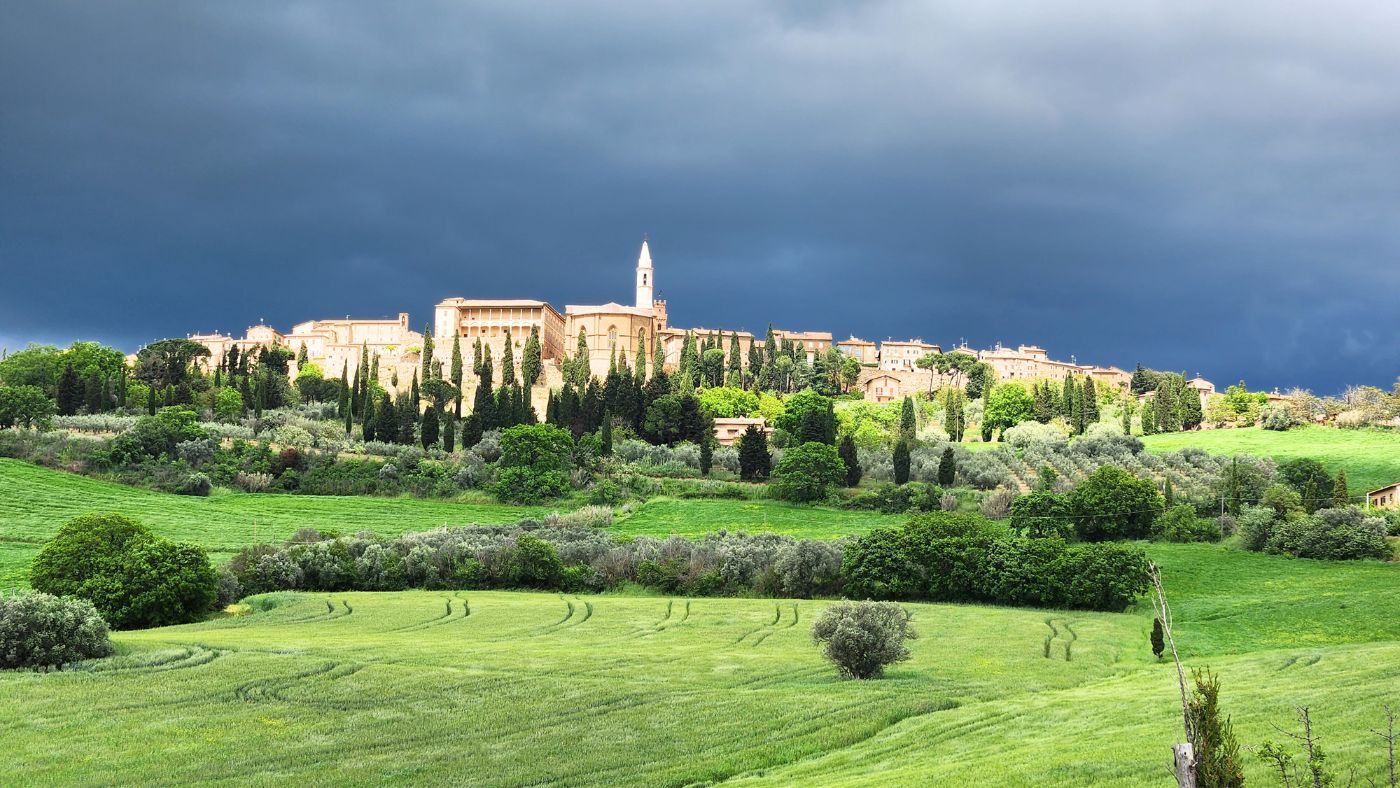Cyclists head to Tuscany to pedal quiet roads, drink amazing wine, savor Pecorino cheese, and immerse themselves in a remarkable landscape, such as what you encounter in the Val d’Orcia – a prominent corner of Tuscany best experienced cycling the White Roads of Tuscany.
Perhaps one of the lesser-known reasons to place Gravel Explorer: White Roads of Tuscany high on your must-visit destinations, rests with prominence of United Nations Educational, Scientific and Cultural Organization (UNESCO) World Heritage Site designations you can experience between Siena and Cortona.
What is UNESCO?
The United Nations established UNESCO in 1946 to support re-building of schools, libraries and museums across Europe following World War II. Over the next two decades, governments and NGOs around the world began asking UNESCO for help protecting and preserving cultural sites threatened by development, war, and environmental crises.
This led to UNESCO establishing the World Heritage Site designation program in 1972 with the goal of protecting and preserving the world’s most significant cultural and natural sites. Since then, more than 1,000 cultural and natural places around the world have received UNESCO World Heritage Site designation.
This label acknowledges the exceptional value of a place, commits to its preservation, promotes sustainable development, and fosters international cooperation in safeguarding our shared heritage for future generations.
Tuscany’s Cultural Achievements
UNESCO World Heritage Sites are hidden gems along our cycling routes – each one a beacon of human achievement and natural splendor. Tuscany, with its rolling hills, ancient cities, and rich cultural heritage, is a canvas adorned with these precious jewels.
The roots of Tuscany’s UNESCO recognitions stretch deep into the past. From the Etruscans to the Romans, Tuscany has been shaped by ancient civilizations whose legacies still echo in its archaeological wonders. The Etruscan tombs of Volterra and the Roman amphitheaters of Florence stand as testament to their enduring impact.
Fast forward to the Renaissance, and Tuscany becomes the epicenter of a cultural revolution. Cities like Florence, Siena, and Pisa emerge as beacons of art and learning, giving birth to masterpieces that define our understanding of beauty and creativity.
Meanwhile, Tuscany’s undulating hills and picturesque villages epitomized the harmony between nature and human activity. This timeless beauty captured the imaginations of artists such as Leonardo da Vinci.
UNESCO on the White Roads
On the White Roads of Tuscany, we begin in Siena, whose historic center was declared a UNESCO World Heritage Site in 1995. UNESCO characterizes Siena as an outstanding medieval city that has preserved its character and quality to a remarkable degree, citing the city’s substantial influence on art, architecture and town planning during the Middle Ages, both in Italy and elsewhere in Europe.
Next, we pedal through the heart of the Val d’Orcia, a principally rural and agricultural landscape, that received designation in 2004. According to UNESCO’s website, it was the dramatic expansion of the city-state of Siena in the 13th and 14th centuries that led to the creation of Val d’Orcia’s distinctive rural landscape, which became strongly associated with Renaissance (14th-15th centuries) utopian ideals and an ideology that was often expressed in paintings.
The Historic Center of City of Pienza is the third and final UNESCO World Heritage Site to be encountered in Tuscany. Our stay for two nights, Pienza is where concepts of Renaissance town planning were first put into practice by hometown humanist Pope Pius II. UNESCO tells us that today, Pienza “occupies a seminal position in the development of the concept of the planned “ideal town” and plays a significant role in subsequent urban development in Italy and beyond.”
UNESCO on tour
More than 50 ExperiencePlus! tour itineraries include a visit to a UNESCO World Heritage Site. These cultural, historic, and natural treasures offer a window into the past, a chance to connect with the people and places that have shaped our world.
As a tour operator, we’re happy to report that UNESCO designation brings economic benefits to local communities since visitors from around the world are drawn to these iconic sites, creating opportunities for local businesses, hospitality industries, and artisans.
From our perspective such attention emphasizes a need for sustainable tourism that can contribute to the socio-economic development of the region while promoting cultural exchange and understanding that does not diminish the value of a place.
Fortunately, balancing the conservation of natural and cultural heritage with the needs of local communities is a central tenet of UNESCO’s mission. Through responsible tourism, environmental stewardship, and community engagement, UNESCO works to ensure that sites remain accessible for generations of travelers to come.
More than just landmarks, UNESCO World Heritage Sites figure into the essence of our cycling journeys. They’re the milestones that mark our progress through time, inviting us to explore, discover, and connect with the rich tapestry of human history.


